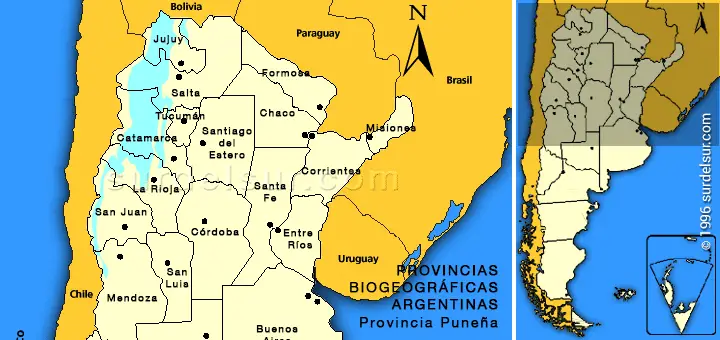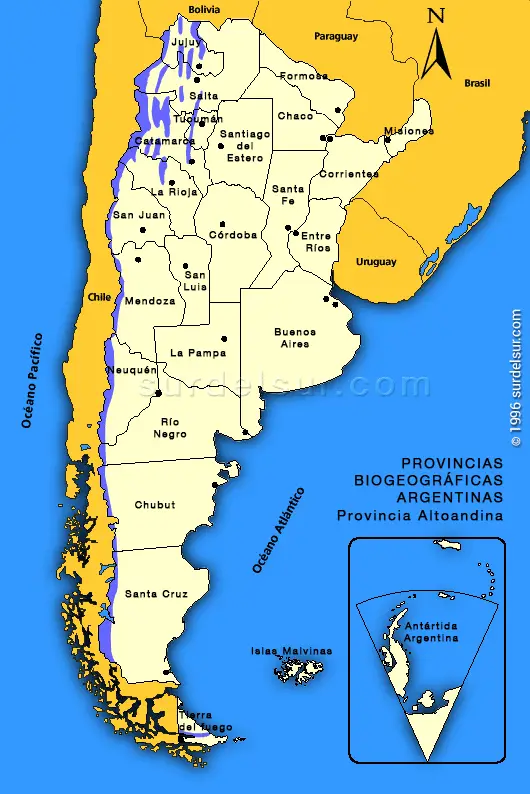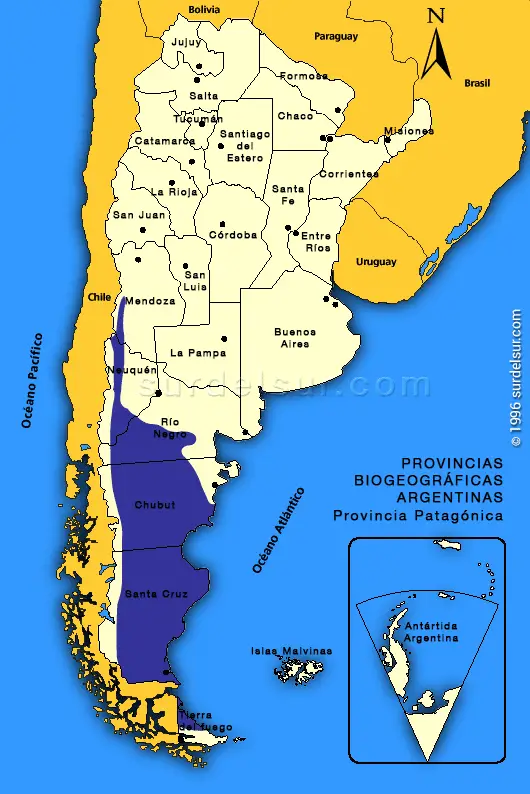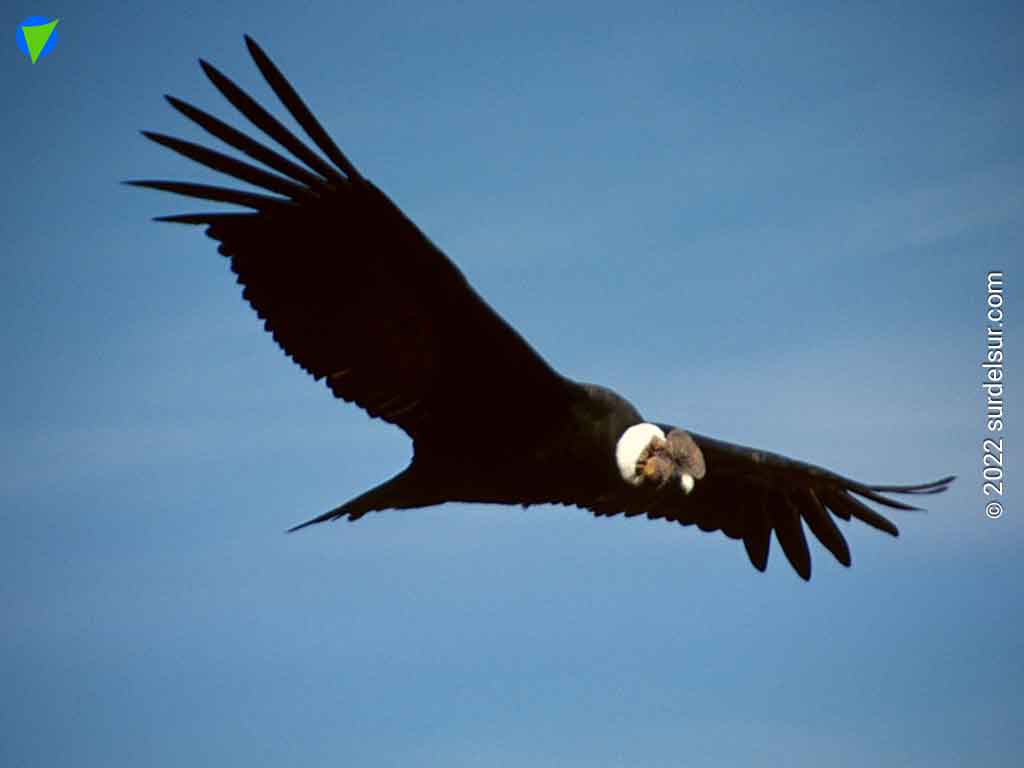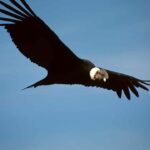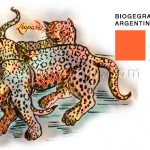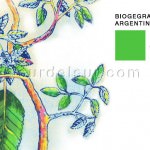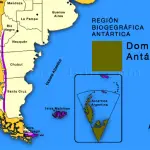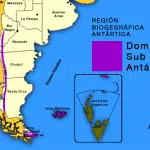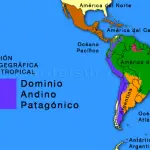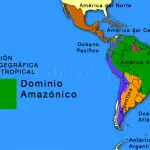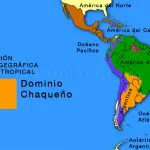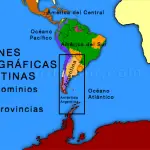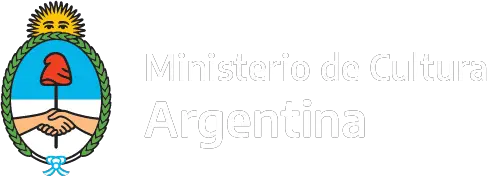The Patagonian-Andean Domain occupies the regions of middle and high mountains of the north and west of South America, from Venezuela to Tierra del Fuego, and goes down to encompass the Patagonian steppe, from the west of Neuquén and Río Negro to Santa Cruz. It has been divided into five Provinces, three of which are represented in Argentina.

Article of the guest columnist, Esteban O. Lavilla y Juan A. González for surdelsur.com
See all reports about Biogeography of Argentina >>
Patagonian-Andean Domain of Argentina
The Andean-Patagonian Domain. is part of the Neotropical Biogeographical Region of Argentina, along with the Chaco Domain and the Amazonian Domain.
Puna Province
The Puna Province is part Patagonian-Andean Domain of Argentina. It covers the provinces of Jujuy, Salta, Tucumán, Catamarca, La Rioja, San Juan, and Mendoza.
It occupies the high mountains and plateaus of the Argentine west reaching 4500 m (14764 feet) above sea level. The minimum height varies between the 2000 m (6562 feet) to the south and the 3400 m (11154 feet) to the north. Its upper boundary is with the High-Andean Province, whereas the lower one is variable, either with the Yunga or the Woodland province.
Climate
Cold and dry, with almost exclusively summer rainfalls which decrease in a north-south gradient up to some areas where it hardly ever rains.
Landscape
Mountains, plateaus, and quebradas, with rocky or arenous soils, are very poor in organic matter.
Vegetation
The characteristic vegetation is a shrubby steppe, though there are also hebaceous formations and meadows. The height of the prevailing plants varies from 20 (7.87 inches) and 100 cm (39 inches).
Communities
Several climax communities have been identified, the most outstanding ones being the following:
Tolilla, chijua and añagua steppes: The prevailing species are bushes (50 – 100 cm or 19.70-39 inches) high, very much apart from each other. This is the most characteristic vegetation of the province.
Chijua steppes: Frequent in the dry puna. Apart from the chijua, cactuses and gramineous plants can be frequently found.
Tramontane steppes, cola de león and lampaya: Restringida a la puna de La Rioja, entre 3100 y 3700 m s.n.m.
Meadows or Swamps: Formed by small plants which develop in water-saturated soils.
Fauna
This is one of the provinces better characterized from the point of view of fauna, with several endemic species. The most outstanding fauna species are the birds related to the large lagoons existing in the region. It consists of both local and migratory species.
The chief species are:
Mammals: Vicuña, guanaco, llama, taruca, fox, puma, gato del pajonal, skunk, red fox, numerous rodents (chinchillas, chinchillones, cuises, country mice, chinchilla rat, etc.), various types of bats, Andean quirquincho, etc.
Birds: Suri, perdiz, kew, agachonas, vizcacha¹s burrow owl, macaes, gallaretas, Andean gull, cóndor, stone woodpecker, humming birds, Andean matamico, three species of flamingos, Puna chorlito, phalarope, chorlo de vincha, tero serrano, Andean avoceta, Puna duck, Puna crow, etc.
Reptiles: Various types of lizards and a few culebras.
Amphibians: are a little diversified and mainly from four genera (see Puna amphibians in the glossary).
Fish: These are not very remarkable, and are limited to some small species. Trout has been introduced in some brooks.
Human Activities
Subsistence agriculture, and the raising of llamas, sheep and donkeys, mining.
High-Andean Province
The High-Andean Province belongs to the Patagonian-Andean Domain of Argentina. It encompasses the high mountains of the Argentine west, from Jujuy to Tierra del Fuego.
The upper limit is the end of the continuous vegetation, whereas the lower limit varies from a maximum of 4400 m (14436 feet) above sea level in the north of the country, up to 500 m (1640 feet) above sea level in Tierra del Fuego.
Climate
Typical of high mountain, cold and dry, with snowfalls or hails in any season.
Landscape
Typical of mountain summits, with rocky soils, rocky or sandy and loose. Very poor in organic matter, except in the peat bogs, which serve as water reservoirs.
Vegetation
The characteristic vegetation is a steppe of gramineous plants and plants forming plates and cushions.
Communities
Three districts have been identified, each one with several climax communities.
Quichua district: From Jujuy to La Rioja, between 4300 and 5600 m (14108 and 18373 feet) above sea level. The prevailing vegetation is the steppes of iro, vizcachera, bitter coirón, cuerno de cabra, etc.
Southern High-Andean District: From San Juan to the north of Neuquén, among the 2200 m (7218 feet) and 4500 m (14764 feet) above sea level. The prevailing vegetation is the gramineous steppes and steppes of low-lying bushes not exceeding 50 cm (19.70 inches).
Southern High-Andean District: From the center of Neuquén up to Tierra del Fuego, between the 500 m (1640 feet) and 2000 m (6562 feet) above sea level. The prevailing vegetation are gramineous steppes of various species, and in some Regions there are communities of low-lying bushes.
Fauna
Very similar to that of the Puna province, which surrounds it almost entirely, though remarkably more impoverished. There are various endemic species such as lizards and aquatic frogs.
Human Activities
Practically non-existent. There may be transhumant pasturing and some mining.
Patagonian Province
The Patagonian Province is part of the Patagonian-Andean Domain of Argentina. Its northern limit can be assimilated to an oblique line that goes from the pre-cordillera to the center of Mendoza until the mouth of the Chubut River in the Atlantic. In the south it spreads up to the north-east of Tierra del Fuego, in the east it is bounded by the Atlantic Ocean, and in the west by the High-Andean Province (up to the center of Neuquén) and Sub-Antarctic Province (up to Tierra del Fuego).
Climate
Dry and cold; in winter there are frequent snowfalls.
Landscape
This is a landscape of plains, plateaus and low mountains.
The soils are generally poor, with rocky and arenous areas.
Vegetation
The prevailing vegetation is shrubby and gramineous. There are also halophilous steppes and meadows.
Communities
Six districts have been identified, with various climax communities.
Payunia District: In the south-west of Mendoza and north-west of Neuquén. Low-lying bushes developing in the volcanic substratum prevail.
Western District: In the west, it spreads in a discontinuous way from Neuquén to the north of Santa Cruz. The main species are from the grass family and low-lying bushes.
Central District: Center of Río Negro and Chubut, and almost all the province of Santa Cruz. It is a very much arid region where the prevailing species are low-lying bushes.
San Jorge Gulf District: Gramineous and shrubby steppe surrounding the gulf after which it is named.
Sub-Andean District: A narrow band, located between the Sub-Antarctic province and the Western and Central Patagonian Districts. It is a gramineous steppe with some isolated bushes.
Fuego District: It includes the meadows and gramineous steppes of the north of Tierra del Fuego.
Fauna
Many runners or burrowing species on the mainland, and various water forms on the Atlantic coast.
Mammals: Murine opposum, golden weasel, grey fox, red fox, big ferret, small ferret, puma, Patagonian skunk, small grey fox, wildcat, mará, vizcacha, vizcacha de la sierra, tuco-tuco, small cuis, various types of mice, peludo, Patagonian pichi, guanaco, fur seal, hair seal, elephant seal.
Birds: Choique, Patagonian quiula, various types of ducks, cauquenes, black neck swan, macaes, gallinetas, gallaretas, gulls, small ñandú, partridge, martinetas, penguins, hawks, chimangos, caranchos, canasteros, finch, diucas, yales, purple calander, caminera, bandurrita, dormilona, etc.
Reptiles: Yarará ñata, cross snake, coral, various types of culebras, numerous lizards, matuastos, etc.
Amphibians: Various species of aquatic frogs, toads.
Fish: Catfish, otunos, peladillas, Criollo, puyen, bare mojarra, etc. The ichtyofauna of the Atlantic littoral must also be included.
Human Activities
Extensive livestock-raising activities.
YOU MAY ALSO LIKE…
Andean Condor the largest soaring bird in the world
Condor is the biggest size flying bird on Earth. This emblematic species lives in South America along the Andes Mountains

